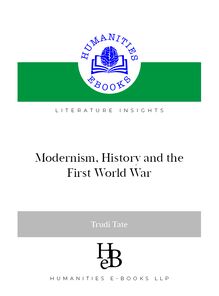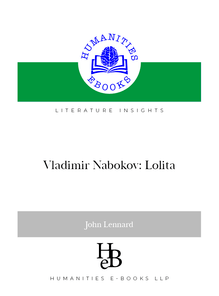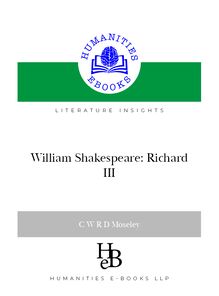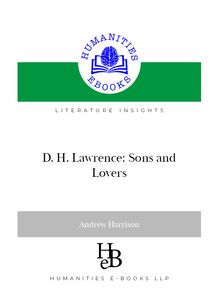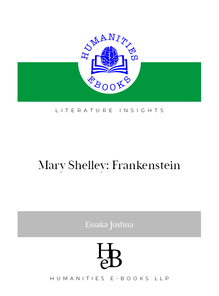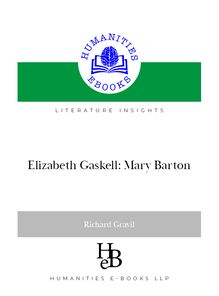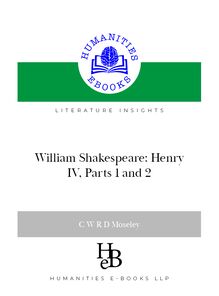-
 Univers
Univers
-
 Ebooks
Ebooks
-
 Livres audio
Livres audio
-
 Presse
Presse
-
 Podcasts
Podcasts
-
 BD
BD
-
 Documents
Documents
-
- Cours
- Révisions
- Ressources pédagogiques
- Sciences de l’éducation
- Manuels scolaires
- Langues
- Travaux de classe
- Annales de BEP
- Etudes supérieures
- Maternelle et primaire
- Fiches de lecture
- Orientation scolaire
- Méthodologie
- Corrigés de devoir
- Annales d’examens et concours
- Annales du bac
- Annales du brevet
- Rapports de stage
La lecture à portée de main
87 pages
English
Découvre YouScribe en t'inscrivant gratuitement
Je m'inscrisDécouvre YouScribe en t'inscrivant gratuitement
Je m'inscris
Obtenez un accès à la bibliothèque pour le consulter en ligne
En savoir plus
En savoir plus
87 pages
English
Obtenez un accès à la bibliothèque pour le consulter en ligne
En savoir plus
En savoir plus

Description
This book aims to introduce students (including those with little or no prior experience of the field) to the worlds of Shakespeare and his theatre revealed in Hamlet.
Sujets
Informations
| Publié par | Humanities eBooks |
| Date de parution | 11 janvier 2021 |
| Nombre de lectures | 0 |
| EAN13 | 9781847600288 |
| Langue | English |
| Poids de l'ouvrage | 1 Mo |
Informations légales : prix de location à la page 0,0200€. Cette information est donnée uniquement à titre indicatif conformément à la législation en vigueur.
Extrait
Literature Insights General Editor: Charles Moseley
William Shakespeare Hamlet
John Lennard
‘The final testimony to Shakespeare’s generosity is how much he leaves up to the actors’ http//www.humanities-ebooks.co.uk
PublicationData
© JOhN leNNàrd, 2007
the aUThOr hàS àSSerTed hIS rIGhT TO Be IdeNTIfIed àS The àUThOr Of ThIS WOrk IN àCCOrdàNCe wITh The cOpyrIGhT, DeSIGNS àNd PàTeNTS aCT 1988.
PUBLIShed ByHumanities-Ebooks.co.uk tIrrIL HàLL, tIrrIL, PeNrITh ca10 2JE
REaDingoPtions
*tO USe The NàvIGàTION TOOLS, The SeàrCh fàCILITy, àNd OTher feàTUreS Of The adOBe TOOLBàr, ThIS EBOOk ShOULd Be reàd IN defàULT vIew. *tO NàvIGàTe ThrOUGh The CONTeNTS USe The hyperLINked ‘bOOkMàrkS’ àT The LefT Of The SCreeN. *tO SeàrCh, expàNd The SeàrCh COLUMN àT The rIGhT Of The SCreeN Or CLICk ON The BINOCULàr SyMBOL IN The TOOLBàr. *FOr eàSe Of reàdING, USe <ctRl+l> TO eNLàrGe The pàGe TO fULL SCreeN *uSe <ESC> TO reTUrN TO The fULL MeNU. *HyperLINkS àppeàr IN bLUe uNderLINed texT.
licEncEanDPERmissions
PUrChàSING ThIS BOOk LICeNSeS yOU TO reàd ThIS wOrk ON-SCreeN àNd TO prINT ONe COpy fOr yOUr OwN USe. cOpy àNd pàSTe fUNCTIONS àre dISàBLed. nO pàrT Of ThIS pUBLICàTION Mày Be OTherwISe reprOdUCed Or TràNSMITTed Or dISTrIBUTed wIThOUT The prIOr wrITTeN perMISSION Of BOTh The COpyrIGhT OwNer àNd The pUB-LISher. màkING Or dISTrIBUTING COpIeS Of ThIS BOOk CONSTITUTeS COpyrIGhT INfrINGe-MeNT àNd wOULd Be LIàBLe TO prOSeCUTION. thàNk yOU fOr reSpeCTING The rIGhTS Of The àUThOr.
isbn 978-1-84760-028-8
William Shakespeare:Hamlet
John Lennard
Literature Insights. Tirril: Humanities-Ebooks, 2007
A Note on the Author
John Lennard took his B.A. and D.Phil. at Oxford University, and his M.A. at Washing-ton University in St Louis. He has taught in the Universities of London, Cambridge, and Notre Dame, and for the Open University, and is now Professor of British & American Literature at the University of the West Indies—Mona. His publications includeBut I Digress: The Exploitation of Parentheses in English Printed Verse(Clarendon Press, 1991),The Poetry Handbook(1996; 2/e, OUP, 2005), and with Mary LuckhurstThe Drama Handbook(OUP, 2002). He is the general editor of the Genre Fiction Sight-lines and Monographs series, and has written Sightlines on works by Reginald Hill, Walter Mosley, Octavia E. Butler, and Ian McDonald. His critical collectionOf Serial readers and other essays on genre îction(2007), published simultaneously with this e-book, launches the Monographs Series.
Contents
A Note on the Author
Preface A note on the texts ofHamlet Acts and scenes in the Arden 3 Q2Hamlet Part 1. Approaching Shakespeare 1.1 A Man of the Jacobethan Theatre 1.2 Companies—Actors—Stages—Audiences 1.3VenusandLucrece 1.4ErrorsandTwo Gentlemen Part 2. Approaching Hamlet 2.1 Revenge with Complications 2.2 A Play by Shakespeare Part 3. Actors and Players 3.1 Old Hamlet / the Ghost 3.2 Horatio 3.3 Claudius 3.4 Gertrude 3.5 Polonius 3.6 Laertes 3.7 Ophelia 3.8 Rosencrantz & Guildenstern 3.9 The gravediggers 3.10 Osric 3.11 Fortinbras 3.12 Hamlet 3.13 “The best players in the world”
Part 4. Acts and Devices 4.1 Acts 4.2 Scenes 4.3 Soliloquy and Colloquy 4.4 Verse, Prose, and Song 4.5 Metatheatre 4.6 Doubling 4.7 Special Effects 4.8 Exits Part 5.HamletandTwelfth Night
Part 6. Critics’ Corner 6.1 Bibliography 6.2 Web-sites Hyperlinked Materials serious doubt theatre-space breath-length discovery-space comedic and tragedic modes Vice Inconclusive Speculation Blackfriars Ciceronian periods
Preface
Like much in the modern world,Hamlethas acquired a tendency to become obese. In 1 the Arden 2 Shakespeare, Harold Jenkins’s edition was twice the width of every other play; in Arden 3, Ann Thompson’s and Neil Taylor’s edition is in two volumes, jointly twice as wide as Jenkins’s one, and such remorseless bulking is an unhappy trend. The play can also expand in performance: a îne 2001 Royal Shakespeare Company (RSC) stage-production (directed by Steven Pimlott and starring Sam West) ran over four hours with two intervals, and Kenneth Branagh’s 1996 îlm-adaptation, lasting a whopping 242 minutes, is rarely watched from start to înish, especially in one go. Still more off-puttingly for students,Hamletcriticism has the same expansiveness. ThisLiterature Insightdeterminedly short. Great need not mean ponderous, is and on stageHamlet (like most Shakespeare) almost always does better at a brisk canter than a solemn march. In dealing with something as complex as the world’s 2 premier Early Modern tragedy simplicity is not always useful; straightforwardness and cogency almost always are, so scholarly problems are ruthlessly relegated to references, while links in the bibliography make available to interested readers the primary materials, that they may see for themselves what the evidence supports. Casting matters are trickier, for there is almost no evidence about the îrst casting of any of Shakespeare’s plays, and most of what is said is pure speculation. Butsomeoneîrst played each role, and a pool of most probable namesis known: so the game can be compulsive. It is in no way necessary, but a grasp of the practical necessities and constraints Shakespeare faced in writing (which for a working playwright of his kindmeanscasting) is very helpful, and inevitably brings more speculative territory into view. So sometimes I speculate, but only in footnotes or link-text, and in Part 6, where it is properly agged and discussion can be as careful as it need. Plot-summaries etc. are widely available, so I assume readers have readHamletat least once and know what happens. The only special thing readers—particularly those without theatrical experience—are asked to do is to think seriously about the
There have been three series of Arden editions: the second appeared 946–82, the third began to appear in 1993. 2 ‘Early Modern’: for historians, the period 500–700; ‘Modern’ = 700–present.
Hamlet 8
business of actingin a particular space. If possible, visit a theatre, any theatre, sit, breathe, look, and absorb its design. Follow these links to images of aclassical 1 amphitheatre,Roman stage,pageant-wagon, andElizabethan amphitheatre, and just look at each hard for a minute. Shakespeare’sHamlethas over four centuries 2 been done in, on, and round about all of them, and many stranger venues besides, and no performance is ever independent of the physical and institutional structures that enable and frame it—buildings, stages, actors, and audiences. If these things are missing from your imagined understanding of the play’s text/s, it will (rightly) seem to you as lifeless as a TV without power; but turn the current on …
A note on the texts ofHamlet
There are three ‘early texts’ ofHamlet:Q1(1603), the so-called ‘Bad Quarto’, which atc.2000 lines is half the length of the others and very different;Q2 (1604), the ‘Good Quarto’ ofc.3700 lines; andF(1623), the ‘Folio text’ ofc.3550 lines from the îrst collected Shakespeare, which dropsc.230 of Q2’s lines, addsc.70 of its own, and (slightly) changes many more. Since the nineteenth century there has also been an ‘eclectic’ or ‘composite’ text ofc.3850 lines, generated by editors who combine all 3 lines in Q2 and F with some lines and stage-directions from Q1. My references are to the Arden 3Hamletedited by Ann Thompson & Neil Taylor (2 vols, London: Thompson Learning, 2006), and usually to its (modernised) Q2 text (in vol. 1); when the Q1 or F texts (in vol. 2) are cited, the reference indicates this. I have also therefore followed the scene-numbering and act-division of the Arden 3 text; in other editions 1.4–5 may be combined, as may any of 4.1–4 (which in F form 3.5–7). For ease of reference a summary of Arden 3’s acts and scenes is given below. nd All other Shakespearean references are to the Riverside text, 2 edition, 1997. Readers are reminded that lines per scene and role vary with editions, and that ‘verse-lines’ (i.e. complete iambic pentameters) divided between two or three speak-ers may count in two or three roles—so totals may seem not to tally. All line-counts given are my own, and derive from the Arden 3 Q2 text.
1 External Hyperlinks appear inblue + underline; internal hyperlinks also have the symbol►. 2 Including a ship in 607: seehttp://www.as.ua.edu/english/strode/articles/taylor/hamlet3.htm For a longer discussion of Shakespearean editing, usingHamlet 5. as an example, see John Lennard & Mary Luckhurst, The Drama Handbook(Oxford: Oxford University Press, 2002), ch. . Line-counts cannot be absolute because methods of counting stage-directions, headings, blank lines, and part-lines that are or end complete speeches vary.
-
 Univers
Univers
-
 Ebooks
Ebooks
-
 Livres audio
Livres audio
-
 Presse
Presse
-
 Podcasts
Podcasts
-
 BD
BD
-
 Documents
Documents
-
Jeunesse
-
Littérature
-
Ressources professionnelles
-
Santé et bien-être
-
Savoirs
-
Education
-
Loisirs et hobbies
-
Art, musique et cinéma
-
Actualité et débat de société
-
Jeunesse
-
Littérature
-
Ressources professionnelles
-
Santé et bien-être
-
Savoirs
-
Education
-
Loisirs et hobbies
-
Art, musique et cinéma
-
Actualité et débat de société
-
Actualités
-
Lifestyle
-
Presse jeunesse
-
Presse professionnelle
-
Pratique
-
Presse sportive
-
Presse internationale
-
Culture & Médias
-
Action et Aventures
-
Science-fiction et Fantasy
-
Société
-
Jeunesse
-
Littérature
-
Ressources professionnelles
-
Santé et bien-être
-
Savoirs
-
Education
-
Loisirs et hobbies
-
Art, musique et cinéma
-
Actualité et débat de société
- Cours
- Révisions
- Ressources pédagogiques
- Sciences de l’éducation
- Manuels scolaires
- Langues
- Travaux de classe
- Annales de BEP
- Etudes supérieures
- Maternelle et primaire
- Fiches de lecture
- Orientation scolaire
- Méthodologie
- Corrigés de devoir
- Annales d’examens et concours
- Annales du bac
- Annales du brevet
- Rapports de stage
Signaler un problème
YouScribe
Le catalogue
Le service
© 2010-2024 YouScribe
